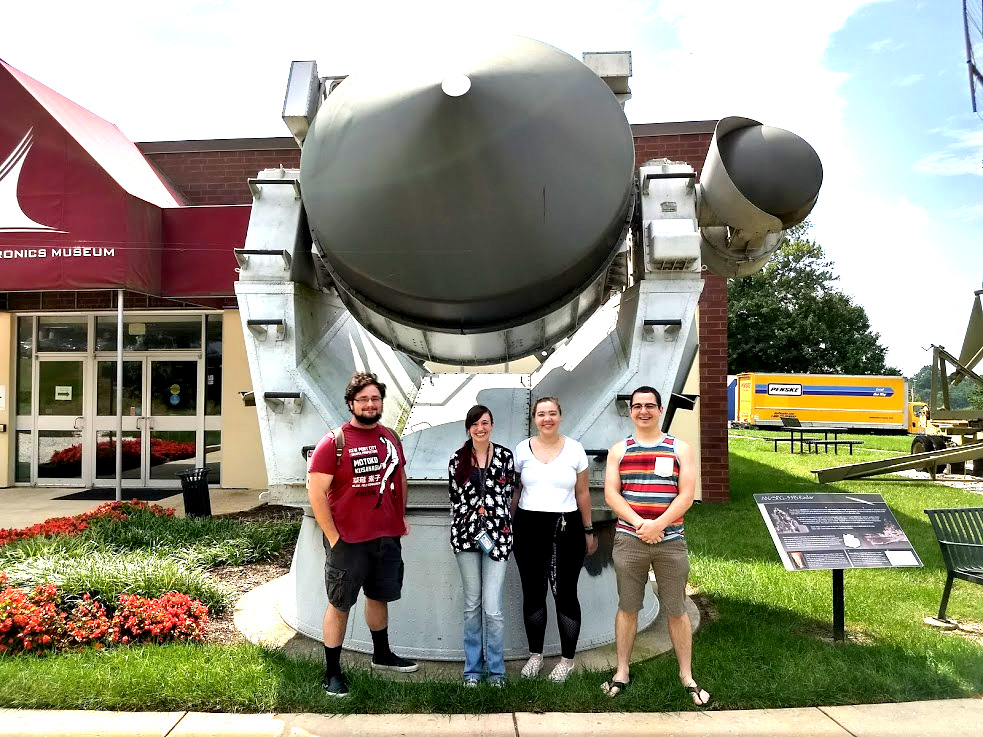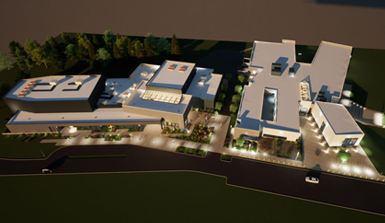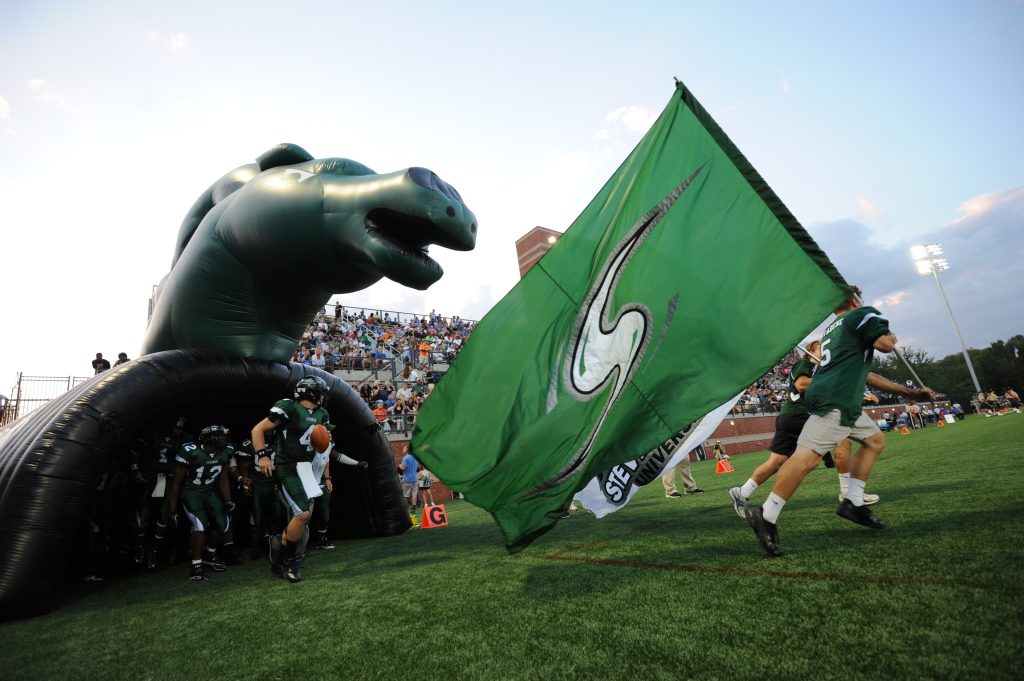
Caption: Stevenson PHIST majors in front of the National Electronics Museum
There’s nothing better than when our majors learn about both careers and new venues. In our history program we provide our students opportunities to expand their knowledge of history, and improve their knowledge of the field whenever we take one of our frequent field trips. In this instance our majors learned about the fascinating world of electronics, its ties to STEM education, and the day to day operations of a small museum.
Caption: The museum is located in a business park setting near BWI.
On Wednesday, 19 September, we went on a field trip to a nearby museum we had never visited before. The National Electronics Museum is located near BWI Airport and has been in existence for nearly 50 years. Closely tied to the former Westinghouse Electronics division located near current BWI Airport, ties still exist to Northrup Grumman. Much of the material in the museum reflects electronic development in support of aviation, space exploration, and the military.
Caption: Learning about underwater electronics from Assistant Director Alice Donahue.
While there, we engaged in a frank and fruitful discussion regarding operating small museums, the life of a public historian, and the myriad jobs associated with the field. Dan Scotten (’14), current Director of Education at NEM, arranged for us to receive a curator’s tour of the museum from Alice Donahue, Assistant Director, as well as a get together with the Museum’s Director, Mike Simons, Dan, and the Museum’s admin officer, Julia Tontala.
Highlights of the discussion were the following points made to our majors:
- Small museums require all employees–paid and volunteer–to pitch in as necessary. Never feel you are above setting up tables or cleaning bathrooms.
- Although the position of museum administrator is never well defined, it is at the heart of keeping the doors open. Tracking the museum’s finances, paying bills, checking on payroll, overseeing taxes, arranging for event and alcohol permits, coordinating with contractors, and dealing with inspectors, the Administrator is in charge of the institution’s logistics. They are worth their weight in gold. It was suggested our majors take a course in not-for-profit administration if the could. According to the professionals, a little bit of knowledge in that area can go a long way.
- Expect to volunteer and work part time when you first enter the field. It is where institutions and other professionals will get to know you and your value to the organization.
- Similar to office administration, a little bit of archives knowledge can go a long way in the field. Many small venues have a library/archive function, and too few public history majors looking for work are literate in that area–to include graduate students.
Caption: The evolution of electronics for aircraft in a tidy exhibit that portrays the development of communications, radars, and electronic warfare packages. Caption: The curator’s eternal dilemma; balancing space for artifacts, images, and text. Caption: The AN/BQ 6 pictured here was developed for the US Navy’s attack submarines. Located within the submarine, it allowed better targeting solutions by adjusting for background noise, target noise, and noise of the submarine itself.
Caption: A German invention at the beginning of WWII, the ENIGMA code device was considered by the Nazi government as being unbreakable. An Allied research team made up of Polish, British, and American scientists discovered how to defeat the machine. In so doing, they allowed the war in Europe to come to an end.
One of the obstacles faced by the NEM is its huge collection of obscure artifacts little known to those outside the field of electronics. Without compelling human stories, it is a challenge to maintain the interest of your audience. NEM does as good a job as any museum at achieving that goal, and they actively seek ways to increase the relevance of their collection to the public.





